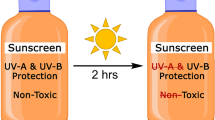Abstract
Earlier investigations have shown that inactivation of non-budding cells ofC. albicans by ultraviolet radiation is determined in part by (i) their post-irradiation incubation temperature, (ii) opportunity for exposure to long chain fatty acids or sterols and (iii) the nutri tional quality of their post-irraditation growth medium. These cultural conditions do not affect the viability of cells which are budding when irradiated nor the frequency of mutants among the survivors of irradiated, unbudded populations. Several lines of evidence have indicated that the post-irradiation growth conditions influence recoveries from non-genetic forms of uv-induced damage which are potentially lethal only for cells which are not in the process of division when irradiated. Studies reported here show that mutation to resistance to the polyene antibiotic, amphotericin B, changes the composite pattern of survival responses of uv treated unbudded cells to the three post-irradiation conditions. Acquisition of amphotericin B resistance does not alter the uv mutability of such cells nor the vulnerability of budding cells to uv inactivation. Differences in susceptibilities of cells to polyene antibiotics are known to be determined by differences in the composition and structural arrangement of their membranes. The present observations are consonant, therefore, with a previous proposal that post-irradiation temperature, nutrition and contact with lipid affect cellular recoveries from damages to processes which (i) are essential for initiation of cell division and (ii) are related to the organization of the cell membrane.
Similar content being viewed by others
References
Andreoli, T. E., V. W. Dennis & A. M. Weigl (1969) The effect of amphotericin B on the water and nonelectrolyte permeability of thin lipid membranes. J. Gen. Physiol., 53: 133.
Athar, M. A. & H. I. Winner (1971) The development of resistance by Candida species to polyene antibiotics in vitro. J. Med. Microbiol. 4: 505–517.
Bard, M. (1972) Biochemical and genetic aspects of nystatin resistance in Saccharomyces cerevisiae. J. Bacteriol. 111: 649–657.
Bish, J. R. & A. Sarachek (1967) Influences of temperature and adenine concentration upon the cultural instability of a red adenine auxotroph of Candida albicans. Mycologia 59: 671–688.
Busbee, D. L. & A. Sarachek (1969) Inactivation of Candida albicans by ultraviolet radiation. Arch. Mikrobiol. 64: 289–314.
Demel, R. A., F. J. L. Crombag, L. L. M. Van Deenen & S. C. Kinsky (1968) Interaction of piolyene antibiotics with single and mixed lipid monolayers. Biochim. Biophys. Acta 150: 1–14.
Demel, R. A., W. S. M. Geurts Van Kessel, & L. L. M. Van Deenen (1972) The properties of polyunsaturated lecithins in monolayers and liposomes and the interactions of these lecithins with cholesterol. Biochim. Biophys. Acta 266: 26–40.
Ghosh, D. & J. Tinoco (1972) Monolayer interactions of individual lecithins with natural sterols. Biochim. Biophys. Acta 266: 41–49.
Glauert, A. M. & J. A. Lucy (1968) Globular micelles and the organization of membrane lipids. in The Membranes, vol. 4 (A. J. Dalton and F. Haguenau, Eds.) Academic Press: New York, pp. 1–32.
Higgins, N. P. & A. Sarachek (1970) Absence of interaction between photoreactivation and temperature-dependent dark recovery of ultraviolet irradiated yeasts. Mycopath. Mycol. Appl. 40: 357–361.
Hsia, J. C. & J. M. Boggs (1972) Influence of pH and cholesterol on the structure of phosphatidylethanolmaine multibilayers. Biochim. Biophys. Acta 266: 18–25.
Kinsky, S. C., G. R. Gronau & M. M. Weber (1965) Interaction of polyene antibiotics with subcellular membrane systems. Mol. Pharmacol. 1: 190–201.
Lampen, J. O. & P. Arnow (1959) Significance of nystatin uptake for its antifungal action. Proc. Soc. Exptl. Biol. Med. 101: 792–797.
Lampen, J. O., P. M. Arnow, Z. Borowska & A. I. Laskin (1962) Location and role of sterol at nystatin-binding sites. J. Bact. 84: 1152–1160.
Molzahn, S. W. & R. A. Woods (1972) Polyene resistance and the isolation of sterol mutants in Saccharomyces cerevisiae. J. Gen. Microbiol. 72: 339–348.
Sarachek, A. & N. P. Higgins (1972) Effects of ergosterol, palmitic acid and related simple lipids on the recovery of Candida albicans for ultraviolet irradiation. Arch. Mikrobiol. 82: 38–54.
Sarachek, A., J. T. Bish & R. Ireland (1970) Relative susceptibilities of caffeine-sensitive and caffeine-resistant strains of Candida albicans to inactivation and mutation by ultraviolet radiation. Arch. Mikrobiol. 74: 244–257.
Sarachek, A., R. B. Goering & J. T. Bish (1969) Differential effects of growth temperatures on inactivation and mutation of Candida albicans by ultraviolet radiation. Arch. Mikrobiol. 67: 189–198.
Setlow, J. K. M. E. Boling & F. J. Bollum (1965) The chemical nature of photoreactivable lesions in DNA. Proc. Nat. Acad. Sci. 53: 1430–14356.
Setlow, R. G. (1968) The photochemistry, photobiology and repair of polynucleotides. in Progress in Nucleic Acid Research and Molecular Biology, vol. 8 (J. N. Davidson and W. E. Cohn, Eds.) Academic Press: New York. pp. 257–295.
Smith, K. C. (1971) The roles of genetic recombination and DNA polymerase in the repair of damaged DNA. in Photophysiology, vol. 6 (A. C. Giese, Ed.) Academic Press: New York. pp. 210–278.
Wallach, D. F. H. (1969) Membrane lipids and the conformations of membrane proteins. in Membrane Proteins (Proc. Symposium, New York Heart Association, Nachmansohn, Symp. Chairman) Little, Brown and Co., Boston. pp. 3–26.
Witkin, E. M. (1969) Ultraviolet-induced mutation and DNA repair. Ann. Rev. Genet. 3: 515–522.
Woods, R. A. (1971) Nystatin-resistant mutants of yeast: alterations in sterol content. J. Bacteriol. 108: 69–73.
Author information
Authors and Affiliations
Rights and permissions
About this article
Cite this article
Sarachek, A., Pettriess, R.W. Influences of cellular susceptibility to amphotericin B and of post-irradiation growth conditions on inactivation of Candida albicans by ultraviolet radiation. Mycopathologia et Mycologia Applicata 54, 205–214 (1974). https://doi.org/10.1007/BF02050041
Accepted:
Issue Date:
DOI: https://doi.org/10.1007/BF02050041




